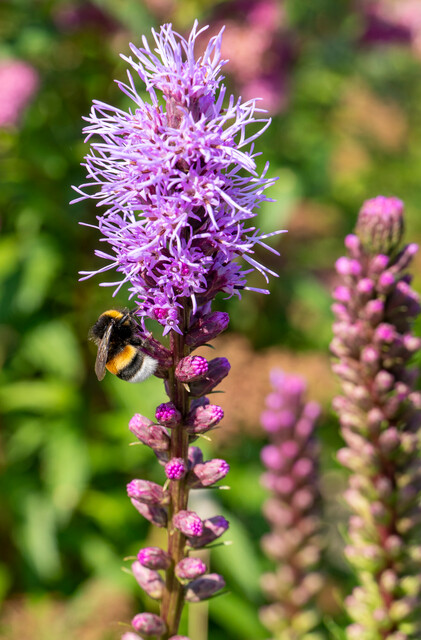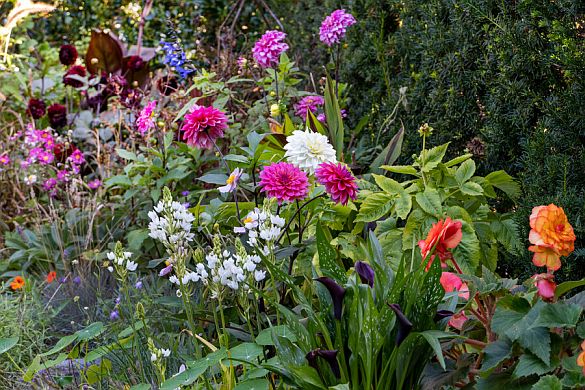Are you looking for some company from happily fluttering butterflies and softly humming bees on your balcony or in your garden on a sunny summer day? Let’s create a snackbar for insects with blooming summer bulbs. With their nectar and pollen, many summer bulbs are perfect as snacking flowers. They increase biodiversity. What’s more, they have a lovely long flowering period.
Non-stop food source
In addition to their beautiful appearance, the long flowering period of summer bulbs is a plus. The first ones will bloom at the end of May and the last in November. In other words, the flowering lines up seamlessly with that of spring blooming flower bulbs like crocuses. This way flower bulbs provide insects with a non-stop food source from early spring to autumn. You can use lots of different varieties. Not only will it look cheerful, but you will also attract more insect species. After all, every insect has its own preference when it comes to flowers. Butterflies, for example, use their rolling tongues to snack on the nectar from deep flowers. Bees prefer more open flowers, where they can gorge themselves on the nectar with their shorter tongues.
Suitable summer bulbs for biodiversity
African Lily (Agapanthus)
Flowering period: July-August, in white and different shades of blue.
Prefers the open ground, but is also suitable for planting in pots. Can withstand a few degrees of frost, but is not fully hardy.
Crocosmia (previously known as: Montbretia)
Flowering period: August-September, in yellow, orange or red.
Sets the border on fire with its bright colours. Perennial.
Dahlia
Flowering period: July-October in almost any colour.
One of the most famous summer bulbs, of which the single-flowered and semi-double flowers are strong performers among the snacking flowers for insects. Annual.
 Gladiolus
Gladiolus
Flowering period: July-September in almost any colour.
The flowers are arranged on the stems in double rows. Not hardy, with the odd exception.
Variegated pineapple lily (Eucomis)
Flowering period: July-August, in yellow, green or white.
This is an unusual flower whose bloom consists of countless tiny flowers. This bulbous flower will return the following year after a mild winter.
Liatris (Liatris spicata)
Flowering period: July-August, in purple or white
Its vertically growing spikes consist of many small flowers. Perennial.
 Practical tips
Practical tips
- Plant annual summer bulbs from the end of April (when the chance of frost has passed) until the end of May.
- Replace slabs with greenery to reduce flooding, increase biodiversity and give nature a helping hand.
- Most summer bulbs are real sun worshippers: the more sun, the richer the flowering!
- Their demands on the soil are modest; it just needs to be sufficiently permeable to water.
- You can also plant summer bulbs in a pot, for some very impressive creations. They also look great on a balcony!
- Ready-made bee and butterfly mixes are also available.
- Annual summer bulbs should be removed from the soil before winter arrives. Store them in a cool, frost-free place. If they are staying in their pot, you can keep the entire pot indoors during winter.
To view wildlife friendly bulbs at Thompson & Morgan click here
All images copyright iBulb
If you have enjoyed reading our blog post then why not fill in the form provided to allow us to send you our blog posts and newsletters by email. For all major gardening products, visit our shop from the menu above.

